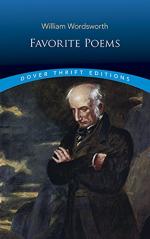
|
| Name: _________________________ | Period: ___________________ |
This test consists of 15 multiple choice questions and 5 short answer questions.
Multiple Choice Questions
1. How does line 3, "Reaping and singing by herself," interrupt the poem's dominant metrical pattern?
(a) It ends with a spondee.
(b) It begins with a trochee.
(c) It ends with a trochee.
(d) It begins with a spondee.
2. In the fourth stanza, when the speaker finally places himself in the scene, what is it clear he is there to do?
(a) He is out walking.
(b) He is delivering supplies.
(c) He is there to confess his love for the woman.
(d) He is working on a farm.
3. What technique is used in phrases like "the Vale profound" (line 7) and "A voice so thrilling ne'er was heard" (line 13)?
(a) Imagery.
(b) Inversion.
(c) Symbolism.
(d) Simile.
4. In line 4, "Stop here, or gently pass!" what is the grammatical mood of the words "stop" and "pass"?
(a) Subjunctive.
(b) Indicative.
(c) Imperative.
(d) Interrogative.
5. What technique is used in the line "A voice so thrilling ne'er was heard" (line 13)?
(a) Paradox.
(b) Verbal irony.
(c) Contraction.
(d) Litotes.
6. Which stanza could be reasonably called the most positive in tone?
(a) The third.
(b) The fourth.
(c) The second.
(d) The first.
7. What is the stanzaic form of "The Solitary Reaper"?
(a) Octet.
(b) Ballade.
(c) Octave.
(d) Ottava rima.
8. Besides that the reaper may be singing about some terrible moment in history, what else does the speaker guess she might be singing about?
(a) Ordinary, everyday troubles.
(b) Love and romance.
(c) Modern political events.
(d) The beauty of the Highlands.
9. What technique is employed in lines 7 and 8, "O listen! for the Vale profound / Is overflowing with the sound"?
(a) Metonymy.
(b) Cacophony.
(c) Hyperbole.
(d) Antanaclasis.
10. From context, what is is likely meaning of "single" in line 1, "Behold her, single in the field"?
(a) Unmarried.
(b) Simple.
(c) Alone.
(d) Honest.
11. What is the young woman doing in the field?
(a) Pushing a cart down a path.
(b) Harvesting a grain crop.
(c) Watching over grazing sheep.
(d) Watching the speaker from the hillside.
12. Who is the author of "The Solitary Reaper"?
(a) Percy Shelley.
(b) William Wordsworth.
(c) John Keats.
(d) William Blake.
13. What is the "sickle" in line 28?
(a) A tied sheaf of grain.
(b) A mark dyed into wool to track sheep.
(c) A handle used to pull a cart.
(d) A sharp cutting tool.
14. What technique is evident in the line "Breaking the silence of the seas" (line 15)?
(a) Synesthesia.
(b) Sibilance.
(c) Onomatopoeia.
(d) Aphorismus.
15. What is subtly appropriate about the meter in lines 25 and 26, "Whate'er the theme, the Maiden sang / As if her song could have no ending"?
(a) The feminine ending of line 26 emphasizes the idea of something that does not end when it is expected to.
(b) The contraction in line 25 creates a second line of trimeter in this stanza, emphasizing the musicality of the song.
(c) Line 25 begins with a dactyl, emphasizing the importance of the content of the reaper's song.
(d) Line 26 has four metrical feet instead of the expected three, creating a feeling of "lingering."
Short Answer Questions
1. What reasonable inference can be made about the reaper from line 17, "Will no one tell me what she sings?"?
2. Where are "the farthest Hebrides" (line 16)?
3. In which stanza does the speaker make it clear that this event happened some time in the past?
4. What is the meaning of the word "Yon" in line 2, "Yon solitary Highland Lass"?
5. Which is the best interpretation of line 6's reference to "a melancholy strain"?
|
This section contains 593 words (approx. 2 pages at 300 words per page) |

|




